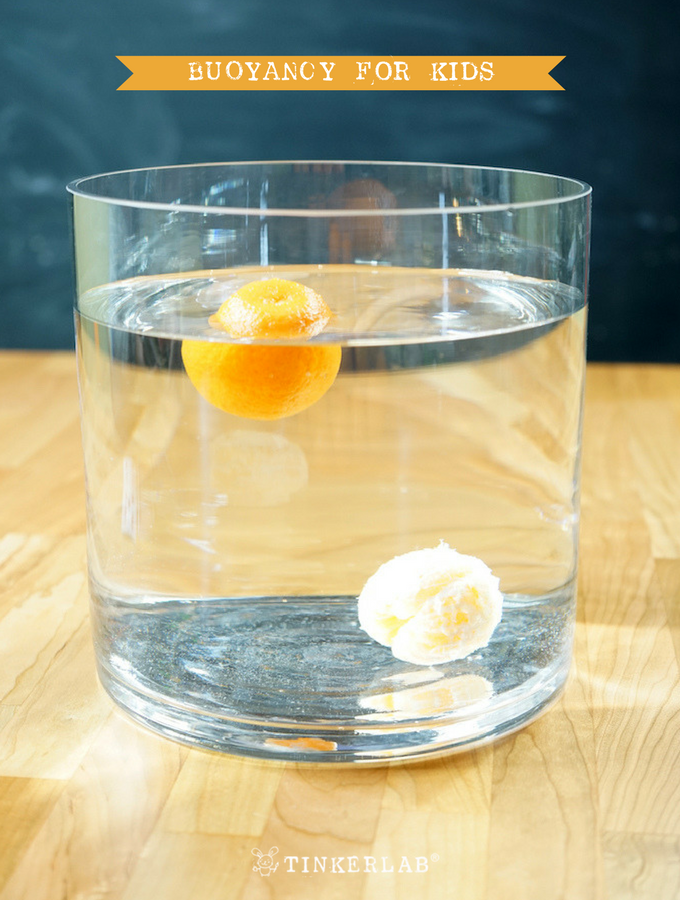
Why does a heavy boat float while a small rock sinks? Would a buoy sink if an elephant sat on it? Sometimes objects sink because they’re heavy, but other times it’s because they are buoyant! This buoyancy for kids experiment helps explain why.
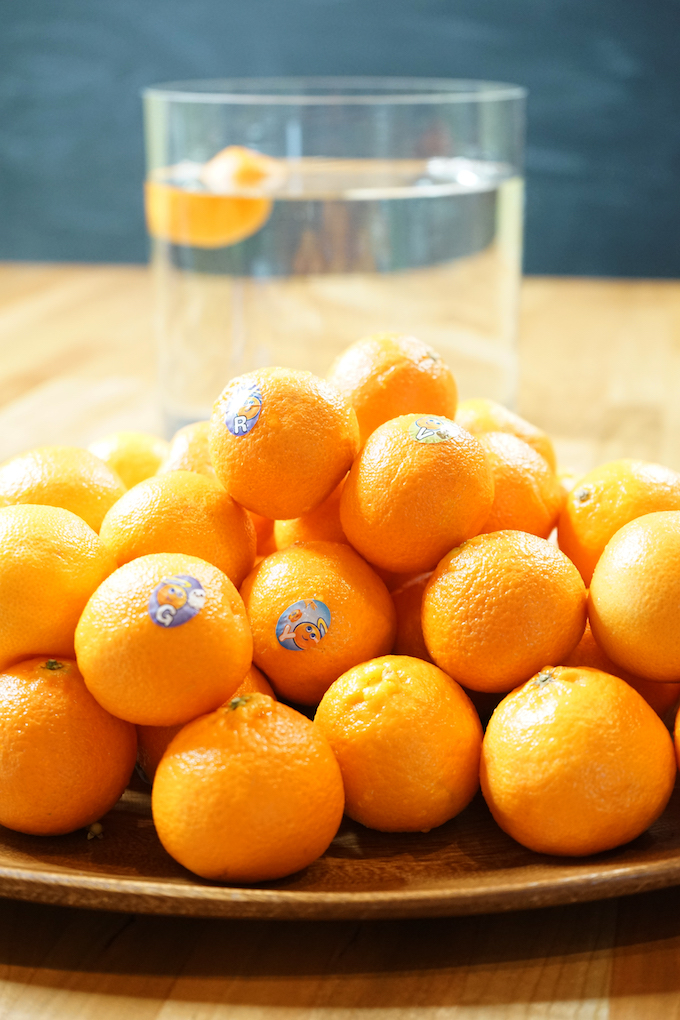
Read About Buoyancy First
One way to get your child interested and excited to explore buoyancy is to read a picture book about it. Scroll down to the end of this article for two book recommendations.
Get Started
The set up is simple. Start with a tall clear vase of water and a small collection of citrus, such as Wonderful Halos mandarins. They are a great snack time treat, and can be included in creative science projects to teach kids that healthy snacking is fun. Not to mention, Wonderful Halos are sweet, seedless and easy to peel, perfect for kids and adults!
With these supplies in hand, ask your child what he or she thinks will happen if they drop a mandarin in the water. Will it sink or float?
If you have a preschooler, you could also offer a small collection of objects such as rocks, seashells, or twigs and ask what they think will happen if dropped in the water.
Have paper and pencil ready in case you want to take notes.
More to Explore
A little while back we set up a floating egg experiment to explore buoyancy from a different angle. Once you’re done exploring the buoyancy experiment on this page, check out the floating egg experiment. All you will need are an egg, water, and a few cups of salt.
Back to buoyancy and citrus, here’s what you’ll need…
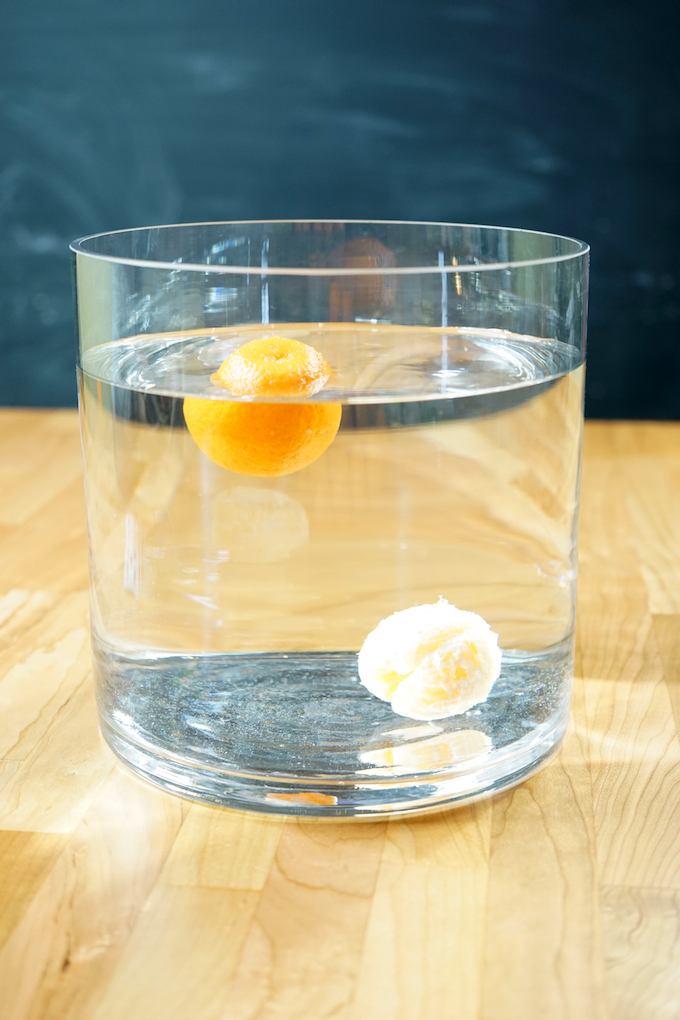
This article may contain affiliate links
Objective
To learn about density while making and testing predictions about sinking and floating.
Supplies
- Wonderful Halos
- Tall Glass Jar
- Water
- Other objects to test for buoyancy
- Paper and Pencil for Note-taking (optional)
Steps
- Predict if the mandarin will sink or float
- Drop it in the water. What happens?
- Predict if the peeled mandarin will sink or float.
- Drop it in the water. What happens?
- Describe how the whole mandarin and peeled mandarin are different.
- Discuss theories about the phenomena that was witnessed.
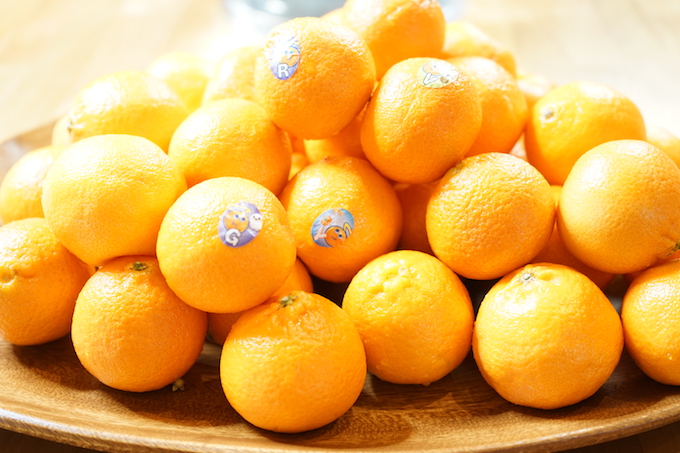
Step 1: Select your fruit and drop it in the water.
Ask: What happens when you drop the mandarin in the water?
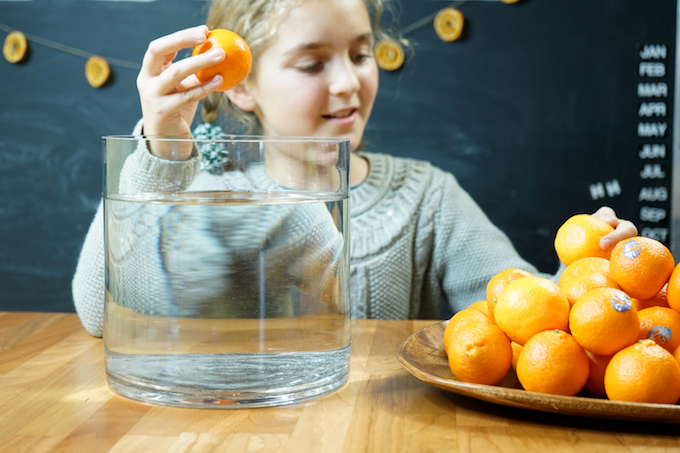
It floats! What? Why doesn’t it sink?
Ask: Why do you think it floats?
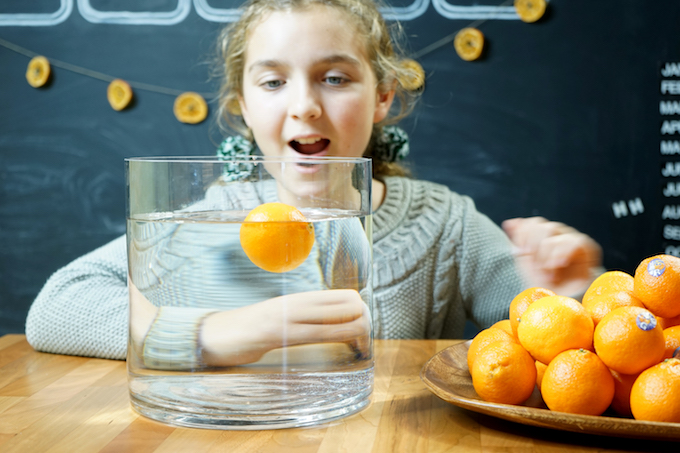
Step 2: Peel the fruit and drop it in the water. What happens?
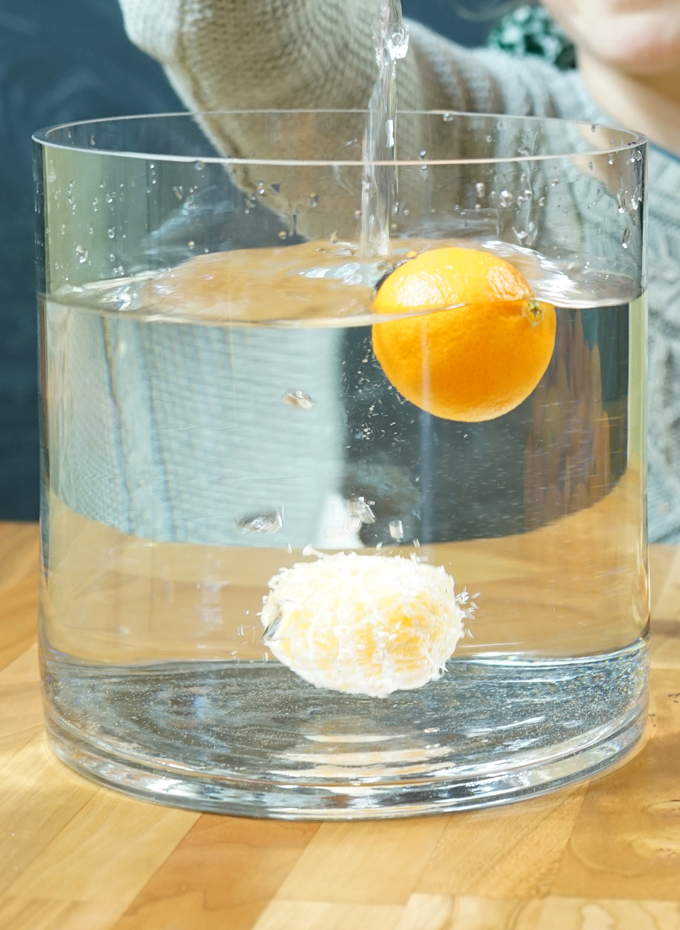
It sinks! Why does this happen?
Ask: Why do you think the peeled mandarin sinks?
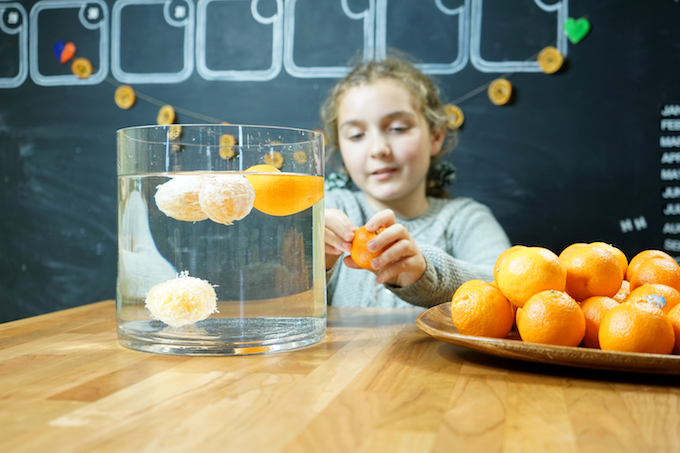
Next: Experiment with other fruits and objects. We tried a lemon: both unpeeled and peeled.
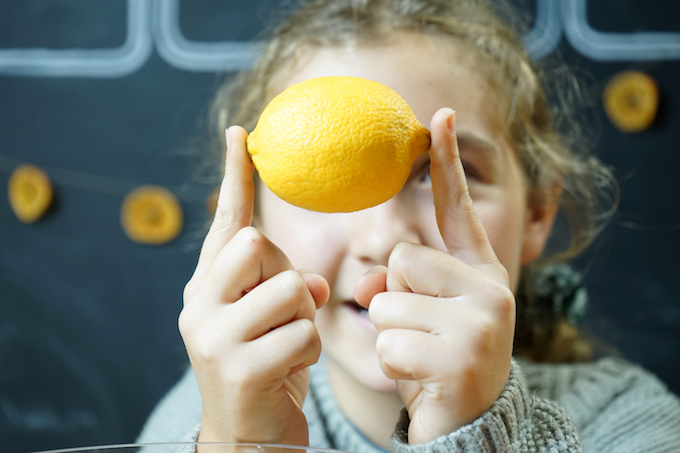
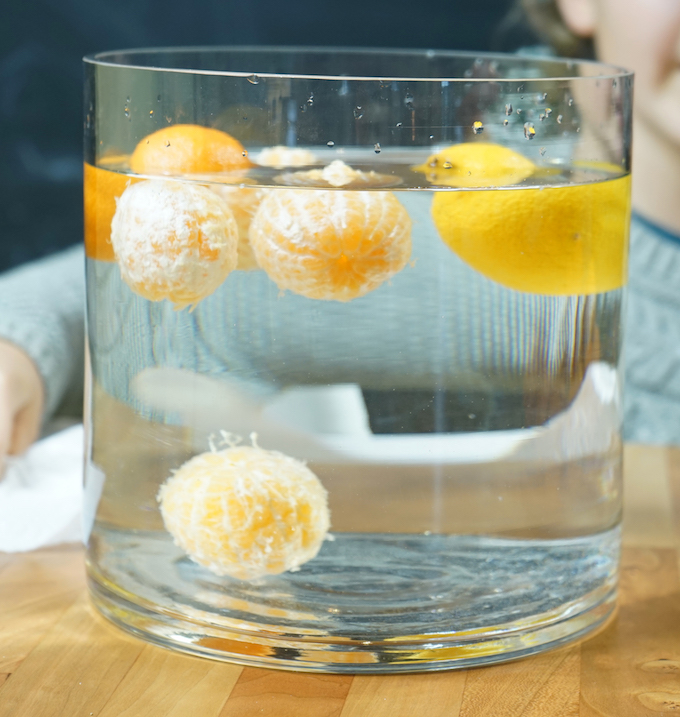
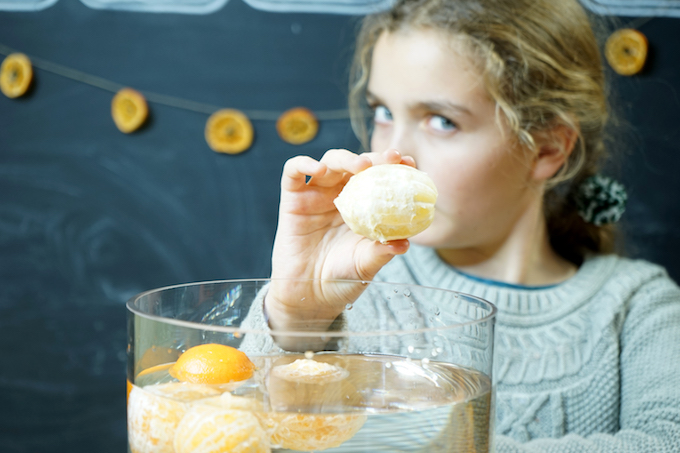
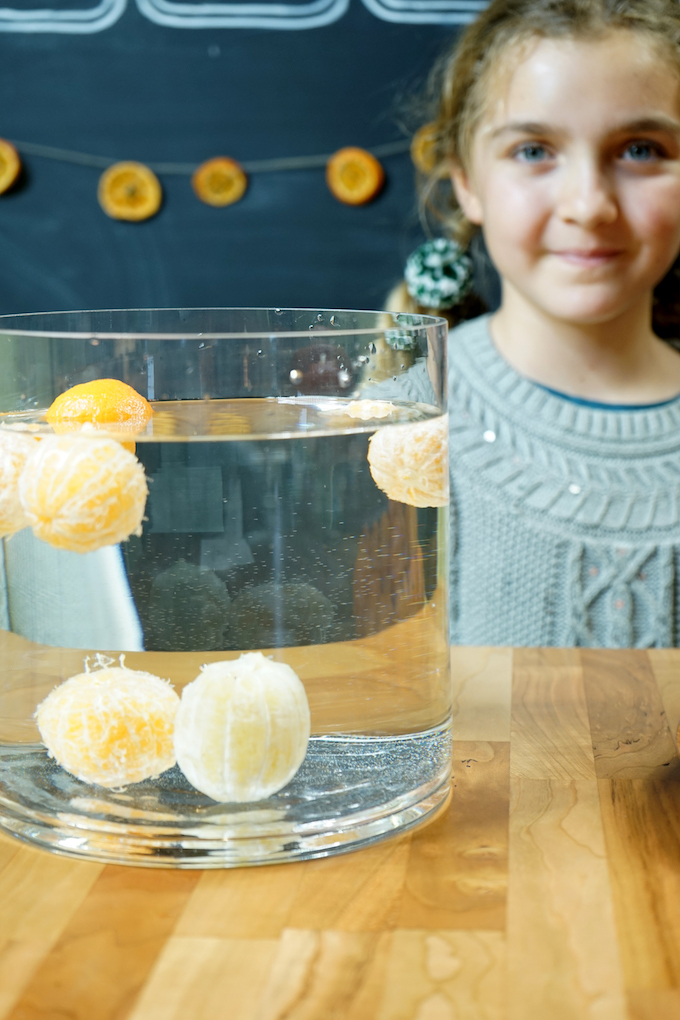
What we noticed
The lemon with a peel floated and peeled lemon sank, the same as our first test with the mandarins: with a peel floats and without sinks.
You may notice that some of the peeled mandarins actually float. What’s going on here? Why do some sink and some float? This is good question, and we’ll tackle it in just a moment.
Hypothesis
After going through this process, I asked my daughter to make some guesses about what was happening. Here are her thoughts:
- The peel has air in it, which helps it float.
- When it’s peeled, there are gaps between the mandarin sections so water can get into it, making it sink.
- When it has a peel it’s like a buoy.
- A rock is heavier so it sinks and the peeled orange is heavier because the water fills it.
The Science Behind the Experiment
Imagine trying to push a beach ball into a pool of water. What happens? You will feel resistance from the water, won’t you? This upward force pushes from the water toward the ball. Now, if you drop an object such as a rock into water and it sinks, gravity is at play. In this case, the downward force of gravity is greater than the upward force of the water. If the upward force of the water is greater than the downward force of the object, the object will float.
Now, imagine that you jump into a pool while wearing a life jacket. What happens? Without the life jacket, your body might sink to the bottom, but with the life jacket it floats. The life jacket is filled with a light material that has lots of little air pockets. The pockets of air weigh less than the water it displaces, so the jacket (and you!) will float. Similarly, if you’ve ever tried floating on your back (without a life jacket), taking a big breath of air can help keep you buoyant because you’re adding air to your body.
The Mandarin Peel is Like a Life Jacket
The whole mandarin is like a person wearing a life jacket. The peel of the mandarin is filled with small air pockets that help the mandarin float, like a life jacket. Remove the peel and the cracks between the mandarin segments fill with water, making it more dense, making it sink.
So why do some of the peeled mandarins sink while others float? We have a few theories.
- Mandarins with dense segments will sink.
- Mandarins that have air in the segments will float.
- Sometimes water will get between the segments, adding more weight, making the mandarin sink.
- When the pith, or white part of the mandarin, isn’t fully removed, it can act as a barrier to water entering between the segments. This keeps the mandarin floating.
What happens when you change the density of the water by adding salt, baking soda, or sugar to it? Try the simple activity in this post to find out.
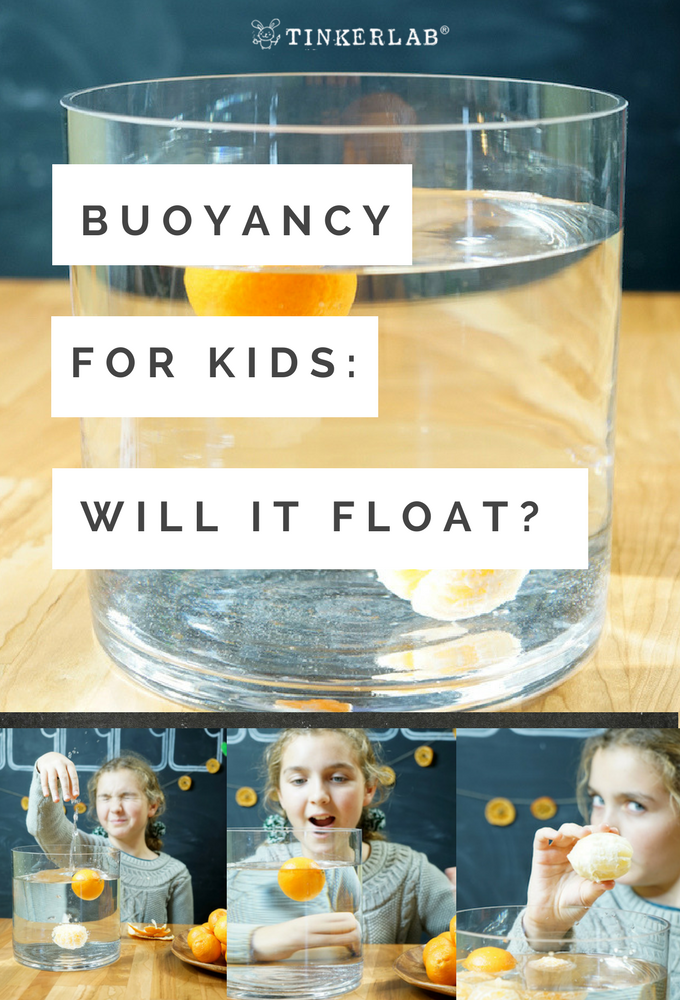
Recommended Books about Buoyancy
Who Sank the Boat?, Pamela Allen
Things That Float and Things That Don’t, David Adler
Thank you Wonderful Halos for sponsoring this post. All opinions are my own.

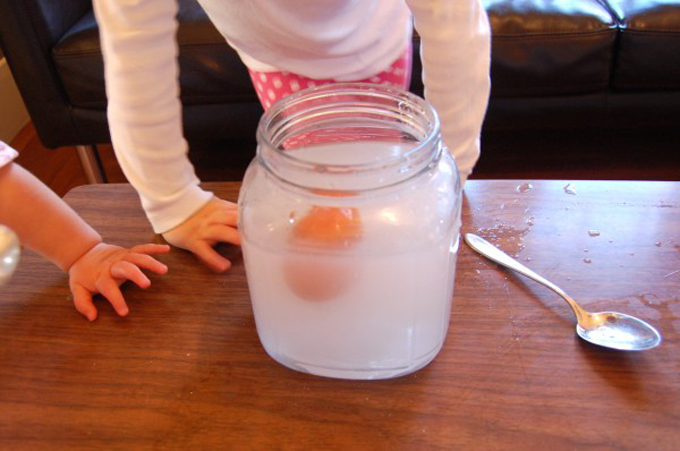

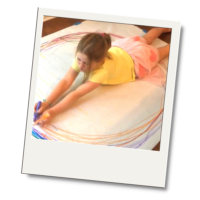
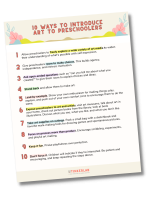
Clear explanation. Easy to understand for kids
Thank you for the kind comment, Anita 🙂
your Sink and Float slides really teach us a lot! REALLY!
I do this experiment often with groups of children to illustrate the importance of wearing a life jacket. Your photos and description are very well done. I will be sharing this page to help parents and teachers do their own buoyancy experiments and water safety talks. Please consider featuring a water safety story, such as Stewie the Duck Learns to Swim, in your links, as well as a link for more water safety education for families. Blessings, Kelly, Jack Helbig Memorial Foundation
Es muy chulo
[…] from the mixture actually grabs onto the raisin, which effectively increases the raisin’s buoyancy, or floating […]